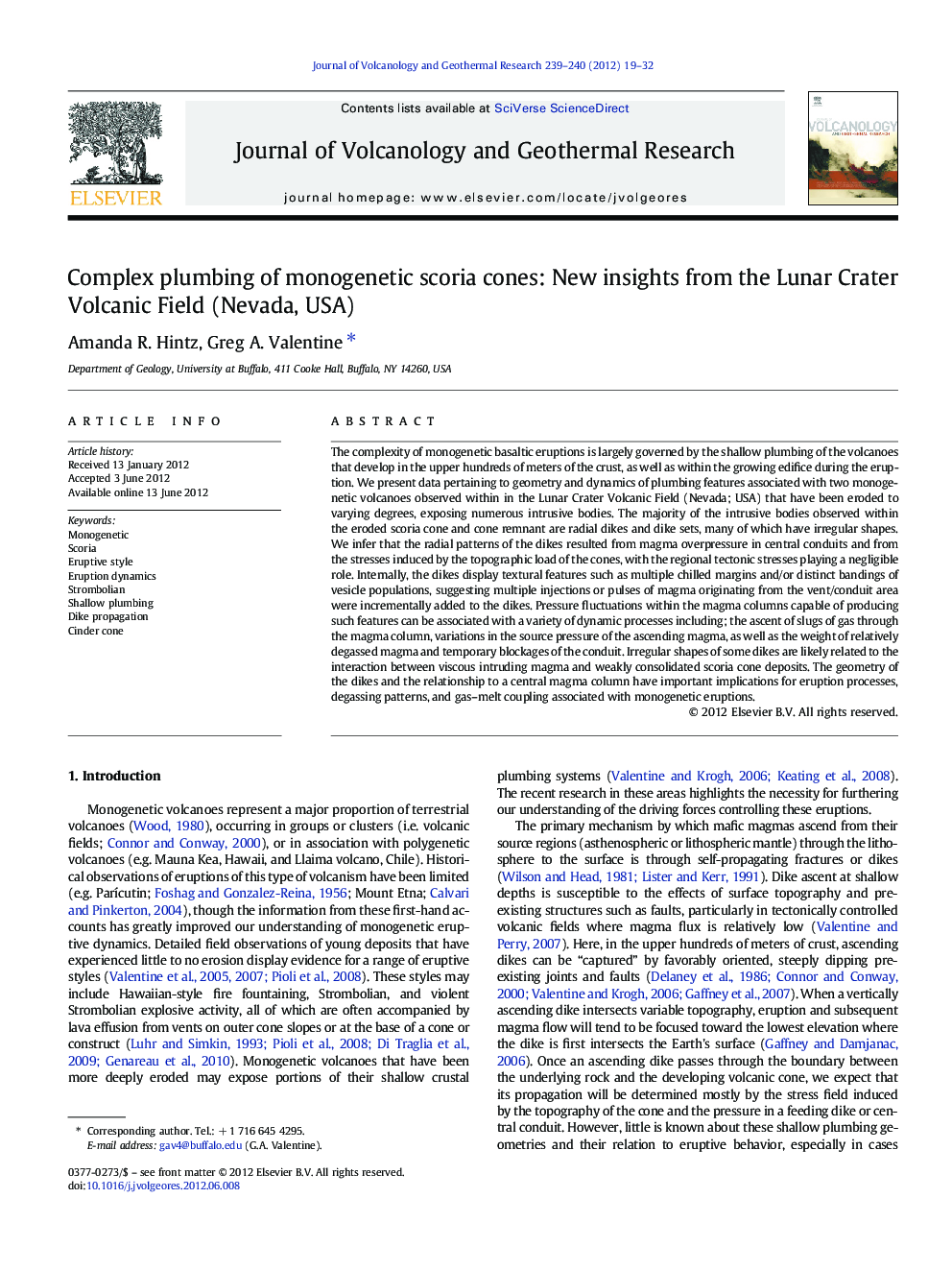| Article ID | Journal | Published Year | Pages | File Type |
|---|---|---|---|---|
| 4712620 | Journal of Volcanology and Geothermal Research | 2012 | 14 Pages |
The complexity of monogenetic basaltic eruptions is largely governed by the shallow plumbing of the volcanoes that develop in the upper hundreds of meters of the crust, as well as within the growing edifice during the eruption. We present data pertaining to geometry and dynamics of plumbing features associated with two monogenetic volcanoes observed within in the Lunar Crater Volcanic Field (Nevada; USA) that have been eroded to varying degrees, exposing numerous intrusive bodies. The majority of the intrusive bodies observed within the eroded scoria cone and cone remnant are radial dikes and dike sets, many of which have irregular shapes. We infer that the radial patterns of the dikes resulted from magma overpressure in central conduits and from the stresses induced by the topographic load of the cones, with the regional tectonic stresses playing a negligible role. Internally, the dikes display textural features such as multiple chilled margins and/or distinct bandings of vesicle populations, suggesting multiple injections or pulses of magma originating from the vent/conduit area were incrementally added to the dikes. Pressure fluctuations within the magma columns capable of producing such features can be associated with a variety of dynamic processes including; the ascent of slugs of gas through the magma column, variations in the source pressure of the ascending magma, as well as the weight of relatively degassed magma and temporary blockages of the conduit. Irregular shapes of some dikes are likely related to the interaction between viscous intruding magma and weakly consolidated scoria cone deposits. The geometry of the dikes and the relationship to a central magma column have important implications for eruption processes, degassing patterns, and gas–melt coupling associated with monogenetic eruptions.
► Eroded scoria cones reveal complex internal radial dikes. ► Dike forms and internal structures support incremental intrusion of viscous magma through unconsolidated pyroclastics. ► Dike emplacement linked to dynamics of melt and volatiles in conduits and eruption mechanisms.
